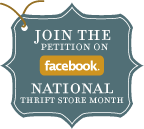At last, my long-awaited conclusion! Today I'm going to write about why charity isn't a solution to the health care crisis in our country.
Parts 1 & 2 Recap
In Part 1 of "But what about charity?", I noted that I've worked as a fundraiser for nonprofits for a decade, so I understand a lot about charitable giving in this country. I pointed out that the reason why charity alone is insufficient is because people's good intentions to donate or volunteer are often derailed by laziness or apathy, or are limited by very real barriers such as cost and time.
In Part 2, I wrote about why charity alone can't address the needs of our mental health care system, pointing out that the elements that research has shown motivates people to give charitably, such as immediate needs, appealing causes, and track records of success, don't apply to mental illness. Instead, mental illness is a long-term problem, it's misunderstood and stigmatized, and the likelihood of complete cures is slim--in other words, a very difficult cause to generate dollars for in the world of fundraising.
Health care and charity
Health care is a whole other ball o' wax. Health insurance differs from other types of insurance, which operate on most people not needing it to cover those that do. But everyone needs health care at some point. Only life insurance comes close, since everyone dies--but that's always a one-time payout--which health care most certainly is not.
Moreover, one report noted that half of all americans have preexisting conditions that might have made them ineligible for some or all health care plans, pre-health care reform.
In other words, the only way to make sure everyone gets what they need is for us to have as big a pool as possible, with everyone chipping in. And since not everyone can afford to chip in, the government has to help out. (Many people have made this argument much more articulately than me).
But some disagree. They think charity can meet these needs.
My husband's surgery: a personal example
During the health care reform debates, I blogged about Senator Tom Coburn, R-OK, who at a town hall responded to a constituent whose husband had a brain injury and had reached the limit on their insurance coverage. Coburn told her that she should be looking to her neighbors and friends for help in the situation.
I was astounded. Charity alone can't meet the health care needs in our country: too many people need it, and it's often too expensive. As a personal example, we had very good insurance when my husband had emergency open heart surgery in 2004. We got a notice of benefits about a month later (with big letters on top: THIS IS NOT A BILL) that informed us how much his surgery and care cost: $86,000+. If we hadn't had insurance, who among our friends and relatives could have helped us with that bill? No one!
That's not to say that our friends and relatives weren't charitable to us during that time. They cooked meals for us, gave us some funds that helped pay for my husband's medications (even with insurance, the copays were about $250 a month for several months), and bought us a TV when ours went on the blink so hubby could have something to do while recuperating. But that's a far cry from coming up with $86,000 to help us pay the bill. The average American facing a medical crisis is in our shoes: unable to afford the cost themselves, and without a big enough or rich enough network of friends and family to cover them.
When taking charge of your own health isn't enough
That's not to say that I think we shouldn't do more to take care of ourselves. For example, last winter when I was unemployed and uninsured, my toes started feeling numb and tender, swelling and turning red. Internet searches and questions on online forums about these symptoms turned up diseases such as diabetes and gout for which I lacked many other symptoms.
So I went to the library (yay, public libraries!) and began combing through medical books. I finally found something that fit. (Unfortunately, I can't remember the disease's name). But it was a condition that affects primarily women (check), it first strikes between the ages of 30 and 50 (check), and usually has no other symptoms besides numbness, pain, swelling and redness in the toes and sometimes fingers (check). The bad news is that there's no cure, and can, in its worst stages, lead to nerve damage and amputation of digits. The good news is that the condition doesn't affect any other parts of the body, and can be prevented. The main means of prevention: keeping your hands and feet warm.
So I began to do that, wearing several pairs of socks and gloves on my hands, even indoors, throughout the winter, and found that the symptoms subsided. And I felt really empowered by the experience of diagnosing and treating myself.
But... what if my library research had turned up a disease that required more than wearing socks and gloves? What if it had required some sort of surgery, or expensive medication? What would I, as an uninsured person, have done then? And please don't give me blather about going to an emergency room. Yes, anyone can go (at high costs to us all!), but they treat what their name suggests, emergencies. My condition wouldn't have presented as an emergency unless my toes were falling off. Barring that, an emergency room would have turned me away.
Subscribe to:
Post Comments (Atom)


No comments:
Post a Comment